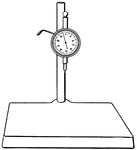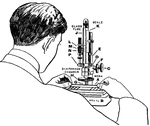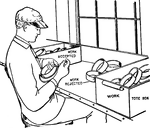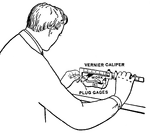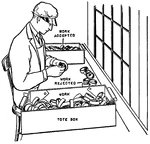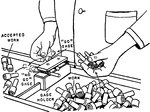
Partial Section of Typical Large American Gas Holder
A gas holder is a metallic shell which is open at the bottom (like a bell), the lower edge of which…

Gentian
A genus of hardy plants, Gentians belong to the order Gentianaceae. They have a bitter taste, and one…

Glaux Maritima
Also known as Sea Milkwort, Glaux Maritima is a hardy perennial seashore plant belonging to the order…

Carding Process in the Manufacuring of Jute
After the softening process in the manufacturing of jute, the fibers are about six feet long, and are…

Jute
Jute, also known as Calcutta Hemp, is a fiber obtained from several species of the genus Corchorus of…
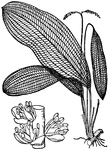
Lattice Leaf
Lattice Leaf is the popular name of a water plant, 'Aponogeton jenestralis', belonging to the order…

Cross of the Legion of Honor
The Cross of the Legion of Honor is a decoration composed of a star of five double rays, with a wreath…

Chrysalis
Typical forms of Chrysalis, the pupae of many Lepidoptera, an order of insects that includes moths and…
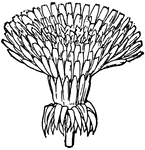
Composite
Composite, or compound flowers, make up the largest botanical order. 1, Capitulum of dandelion.
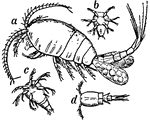
Copepoda
Copepoda, an order of Crustacea. A, cyclops quiadricornis; b, c, d, stages of growth in larvae.
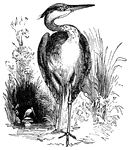
Heron
A great blue heron, commonly found in tropical areas like Florida. They belong to the order Grallatores,…

Gunboats
Gunboats in the James River off the Virginia coast. Gunboats were boats used for carrying one or more…

Bench Inspectors
Group of workers inspecting small parts under lamps. They are seated on high stools with backs.
Test Indicator
Universal dial test indicator used to take fine measurements during inspections of parts.

Snap Gage
Adjustable thread limit snap gage. A snap gage is a form of Go/no go gauge. It is a limit gage with…

Bench Centers
Bench centers are used to check concentrically, parallelism and true rotations of manufactured products.
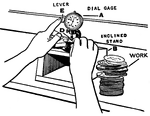
Dial Gauge Used for Measuring Work
Measuring thin work with dial gauge A attached to a special, inclined stand B for quick reading. The…

Testing Thickness
Testing thickness of flanges with universal dial indicator. The indicator A clamped to rod B is set…
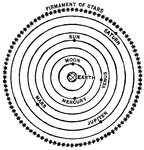
Spheres of the Ptolemaic System
A diagram showing the order of the universe as expounded by Ptolemy. Its basic concept surmises that…

Jesus Tells the Rich Man to Sell All of His Possessions, Give to the Poor, and Follow Him
"And when Jesus heard it, he said unto him, One thing thou lackest yet: sell all that thou hast, and…

Paul is Beheaded at Rome by the Order of Emperor Nero
Illustration of Paul, kneeling on one knee in the city streets, head bowed, awaiting execution. A man…
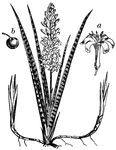
Snake Plant
Sansevieria Zeylanica is the Latin name, but this plant is also called a Mother-in-law's Tongue. "A…

Pulleys - Smeaton's Blocks
"A system of pulleys in two blocks, so arranged that the parts of continuous rope are approximately…
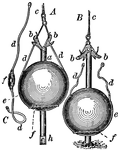
Brooke's Deep Sea Sounding Apparatus
"To measure the depth of; fathom; try or test, as the depth of water and the quality of the ground,…
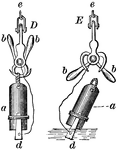
British Navy Sounding Apparatus
"To measure the depth of; fathom; try or test, as the depth of water and the quality of the ground,…
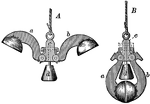
Taselli's Sounding Apparatus with Cups Opened and Closed
"To measure the depth of; fathom; try or test, as the depth of water and the quality of the ground,…

